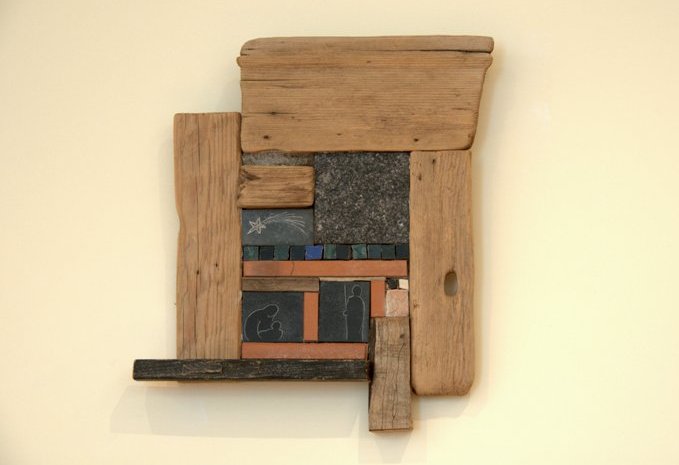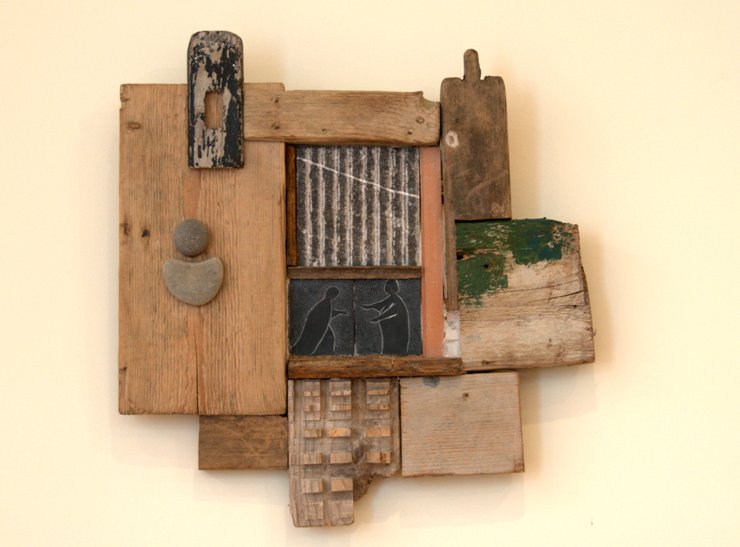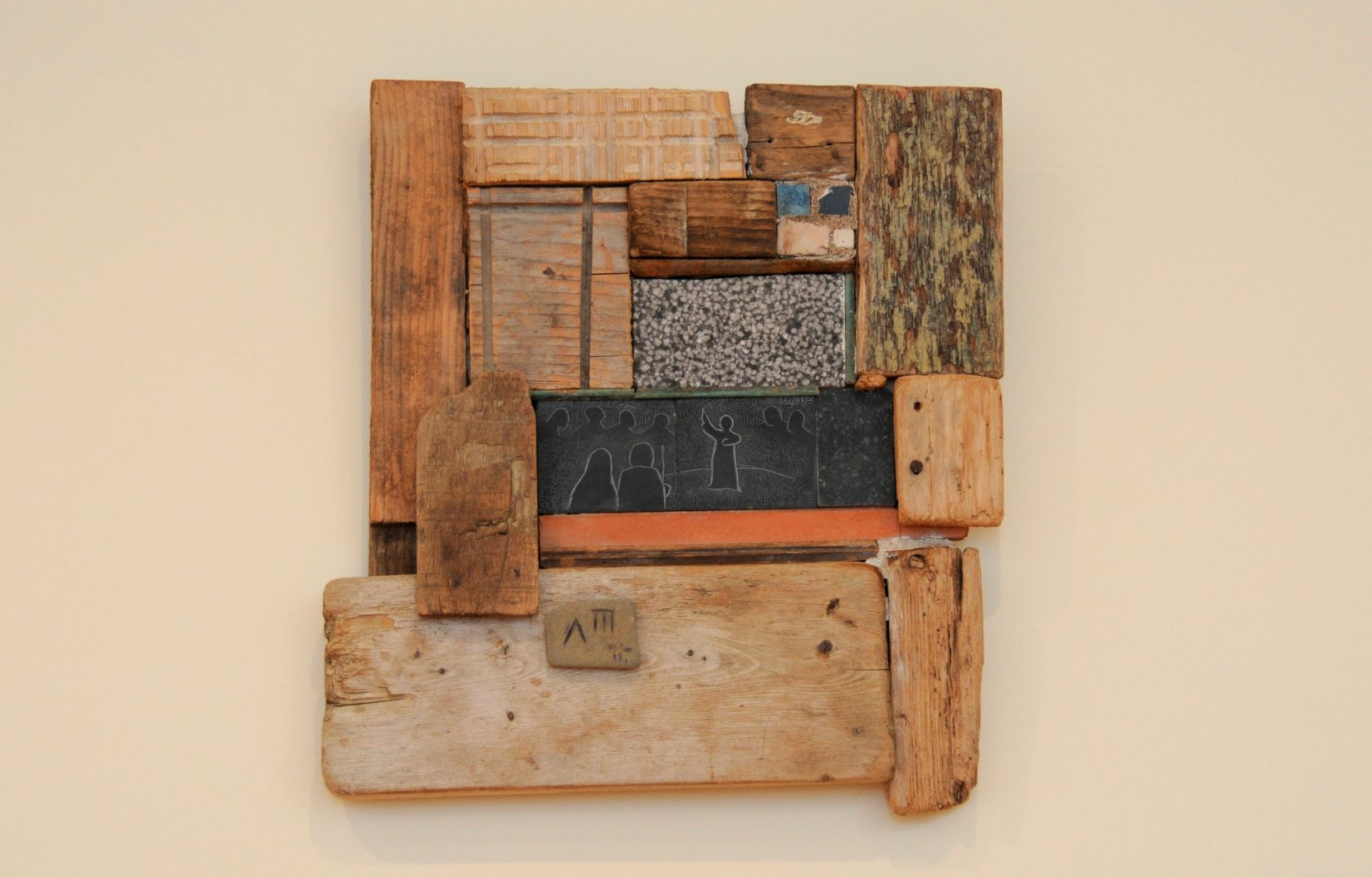Artists





Ciro - VM - Koenraad De Wolf
Ciro: Via Maria

Waste Materials Bubbling with Life
by Koenraad De Wolf
Our society sits on a gigantic mountain of waste. The figures are staggering. Each year sixteen million Dutch people produce nine million tons of waste. Six million Flemish people are responsible for three and a half million tons a year. All of this refuse is partly burned, dumped, reduced, composted and only for a very small part recycled. Someone who has been concerned about this for decades is the Italian arte povera artist Ciro – short for Roberto Cipollone. Since 1977 he has lived in Loppiano near Florence in the first ‘city’ of the Focolare movement (‘people of the fireside’ - a post-WW II Roman Catholic group made up mostly of lay people), where he heads the creative workshop ‘La Bottega Di Ciro’. His studio literally bulges with all kinds of waste materials that he ingeniously reuses.

Ciro has made artworks for liturgical spaces in Italy and Austria. In 2004-2005 he created in consultation with the Belgian architect, Francis Keutgens, and his Argentinian colleague, Marcelo Pardo, a Via Maria for the new chapel of the Eenheid (Unity) conference centre of the Focolare movement in Wezemaal, near Leuven, Belgium. Ciro did not make a traditional Stations of the Cross, but a Via Maria in order to focus on the high value the Focolare place on Mary as a model for Christian life and spirituality.

In eight stations the artist portrays the life of Mary. In line with the rest of his artwork he only makes use of waste. The artist systematically seeks ‘poor materials’: pieces of wood, steel, stone and fabric that still bubble with life or on which the traces of a former life are still tangibly present. His work is an indictment of the excesses of a consumerist society that needlessly and on a large scale throws things away that are still usable. Driven by his intense solidarity with nature, Ciro asks for respect for nature and the long deterioration process of organic material, which he incorporates in creative ways in his assemblages. He is especially fascinated by the combination of various kinds of debris and the optical effects that result from the variation in depth.

In each of the eight stations of the Via Maria Ciro integrates a piece of blue stone with a scene from the life of Mary: the Annunciation, the Visit to Elisabeth, the Birth of Jesus, the Presentation in the Temple, Finding the Young Jesus in the Temple, Life in Nazareth, the Wedding in Cana, and Mary at Jesus’ cross.

The varying shapes of the stations of the Via Maria are all more or less square. Their diverse combinations of fragments of wood and stone stand out for their simplicity. They do not impose themselves upon us even as they convey to us rich content and subtle poetry. Ciro’s sensitive and meditative art makes us reflect on the impermanence of the materials he uses and through this also contemplate the transitoriness of life.
*******
Ciro: Via Maria, mixed media, 2005, Chapel of the Eenheid (Unity) Conference Centre, Wezemaal, Belgium. The works above are: 1. The Birth of Jesus; 2. The Visit to Elisabeth; 3. Finding the Young Jesus in the Temple; 4. Life in Nazareth; 5. The Wedding in Cana.
Ciro (Roberto Cipollone) was born in Pescara, Italy in 1947. From an early age on he made frequent visits to his father’s foundry. Motivated by a deep love of nature and an intense spirituality, he grasped every possibility to express himself in small objects, drawings, engravings and paintings. After spending six years in The Netherlands he moved in 1977 to the centre of the Focolare movement in Loppiano near Florence, Italy. Here Ciro could devote himself fulltime to his own vein of artistic work. He makes use of very diverse materials: wood, iron, stone, fabric, often giving them a second life as he considers them so rich and full of life. www.labottegadiciro.it
Ontmoetingscentrum Eenheid (Unity Conference Centre), Aarschotsesteenweg 381 Rotselaar-Wezemaal.
Koenraad De Wolf (b. 1956) studied history and art history at the Katholieke Universiteit Leuven and has published several books and dozens of articles. Since 2000 he has worked as a journalist with the Belgian weekly Tertio. www.koenraaddewolf.be
More information about the most striking examples of contemporary religious art in Belgium in the period of 2000-2010 can be found on website www.koenraaddewolf.be in the section ‘A New Spring for Religious Art.’ In 2011 Koenraad De Wolf published a book on the same subject with the same title (Nieuwe lente voor religieuze kunst).
ArtWay Visual Meditation June 24, 2012


